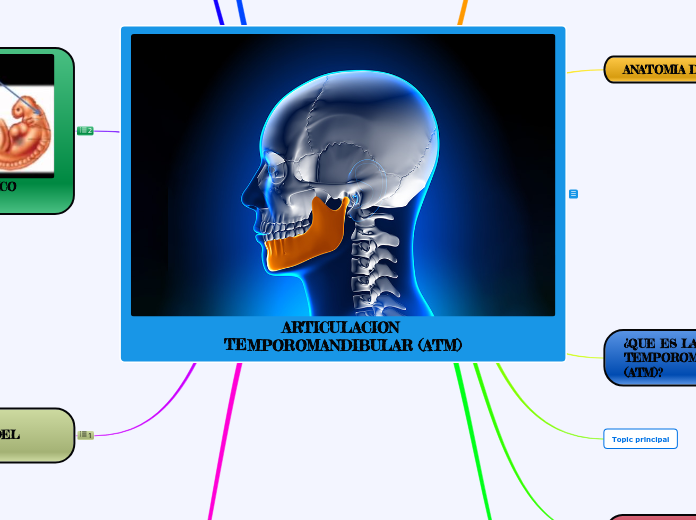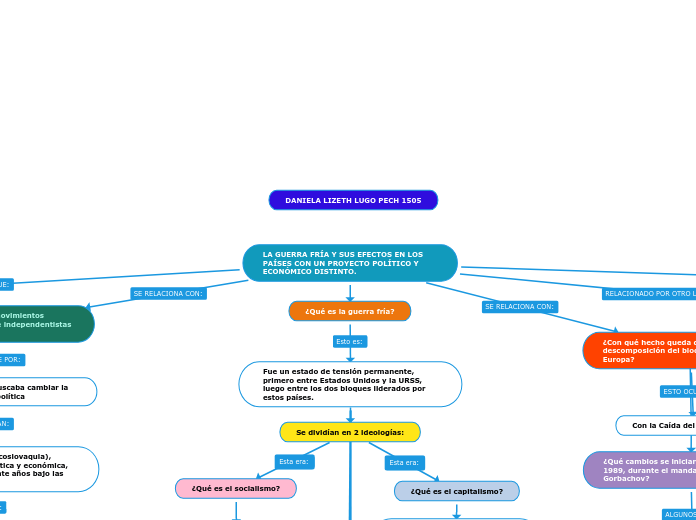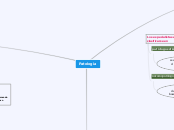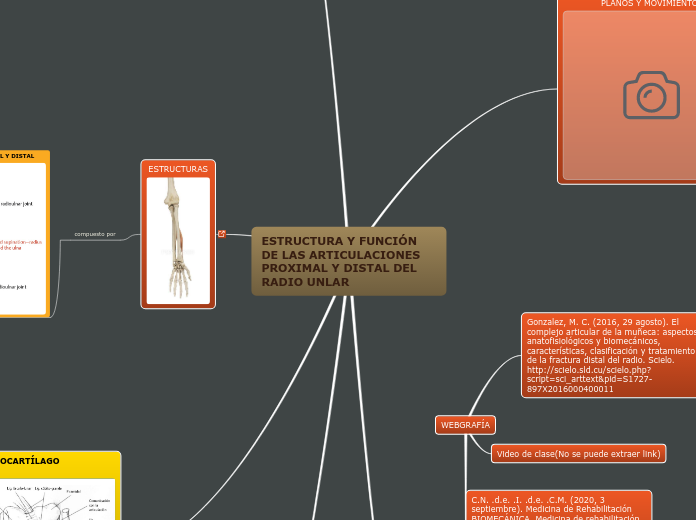ARTICULACION TEMPOROMANDIBULAR (ATM)
JK
The Personal SWOT Analysis will provide insights based on your personality strengths and weaknesses, challenges you see ahead, opportunities present around you now, as well as future favorable circumstances.
PATOLOGIAS DEL (ATM)
las patologías del ATM se dan debido a un deterioro mas rápido en las articulaciones, iniciando un declive a los 30 años.
Esta patología de la ATM afecta necesariamente los músculos que mueven la mandíbula, la causa de se debe a una combinación de de tensión muscular y problemas anatómicos dentro de las articulaciones y nervios del rostro.
Tales como:
Anquilosis
Artrosis
Luxaciones
CONSIDERACIONES FUNDAMENTALES DEL (ATM)
Según señala Martín Granizo
El ser humano puede realizar movimientos de apertura y cierre, lateralidad o deducción, protrusión y retrusión mandibular
Es una articulación simétrica con dos grados de libertad de movimiento (diartrosis)
DESARROLLO BIOLOGICO DEL (ATM)
Finally, look at any threats to your career growth. This part accounts for the external factors that could hurt the chances of attaining your goals.
Las primeras articulaciones se establecen en la semana 14 de gestación, cuando se producen cambios morfológicos gracias al crecimiento de tamaño de las estructuras que lo conforman.
Where do you see yourself in the next 5 years? Will there be a drastic change?
List out future changes that you will have to add or avoid if you own a business.
If you have a job, will advancement in technology cost you your job?
¿DONDE SE ORIGINA LA (ATM)?
Once you have listed out your SWOT - It's now time to evaluate and determine further steps that need to be taken in order to achieve your goals.
There are mainly two methods:
1) Matching
2) Turning negatives into positives
de dos blastemas
You can evaluate your results using the matching method, which means connecting two of the categories to determine a course of action.
Please see a few examples here.
Glenoideo
Matching weaknesses to threats exposes areas you should work on or situations to avoid, letting you know where to be more defensive as well.
Condilar
For example matching strengths to opportunities shows you where to be aggressive and take action.
Entre estos dos blastemas aparece una capa de tejido mesodérmico que va a constituir el futuro disco articular. El proceso que se inicia en
la séptima semana de gestación culmina a las 21 semanas, cuando se encuentra completamente formada la articulación.
Subtopic
LIGAMENTOS DE LA ATM
This is the most important step of all: bringing the plan into action.
Start using your results to track your progress. Set up measurements and milestones and keep working toward them. Step by step, you will get where you want to be, so get started now!
Ligamento estilo mandibular: Es una
banda fibrosa que une la apófisis
estiloides del temporal con la mandíbula, bajo la inserción del ligamento esfeno mandibular.
Ligamento esfeno mandibular: Es una banda de tejido fibroso que une las apófisis pterigoides del esfenoides con la mandíbula por su parte interna.
Ligamento temporomandibular: este es el medio de unión mas importante y se dispone por fuera de la capsula fibrosa y se considera ligamento colateral, este ligamento genera estabilidad en la articulación
POSICION DEL (ATM) EN REPOSO
Cuando la mandíbula se halla en reposo, cuelga del cráneo dejando una distancia entre las superficies oclusales de ambas arcadas que oscila entre 1 y 3 milímetros, medidos a nivel incisal
TIPOS DE MOVIMIENTOS DEL ATM
En la articulación temporomandibular existen dos tipos de movimientos
Translación
En la mandíbula
se produce en movimientos de
protrusión, en tres planos también horizontal, frontal (vertical) y sagital.
Rotación
El movimiento de rotación mandibular puede producirse en los tres planos de referencia: horizontal, frontal (vertical) y sagital.
Topic principal
¿QUE ES LA ARTICULACION TEMPOROMANDIBULAR (ATM)?
Esta formada entre el cóndilo de mandíbula y el cóndilo temporal que hace posible abrir y cerrar la boca; está ubicada delante de la oreja y a cada lado de la cabeza. Se utiliza para hablar, masticar, deglutir, bostezar y en diversas expresiones faciales.
ANATOMIA DE LA (ATM)
For the opportunities section, look at the external factors you can take advantage of in pursuing a promotion, finding a new job or determining a direction for your career.
ESTRUCTURAS ANATOMICAS DEL (ATM)
Existen 2 articulaciones dentro de cada articulación temporomandibular; una superior y otra inferior, divididas por un menisco interpuesto entre ambas.
If you plan on changing your job or investing in your own business:
- Is this the right time to invest in your business?
- Will you get your desired salary if you change your job right now?
- Will you get the desired ROI if you invest right now?
Have you calculated the risk involved?
Add a few questions and answers of your own related to the industry that you work in.
Question
La ATM inferior es una
articulación giratoria, con movimientos de rotación , ya que ese es el movimiento de una esfera en un
plano).
La ATM superior se lleva a cabo entre la cavidad glenoidea del hueso temporal, la eminencia articular y el menisco. Es una
articulación de deslizamiento, en la que sólo existe movimiento translatorio de la
misma.
¿EN QUE SE DIFERENCIA LA (ATM) DE LAS DEMAS ARTICULACIONES?
This part examines the areas which you need to improve and the things that will set you back in your career.
It is really important to be honest when you list out your weaknesses.
En que sus superficies articulares no están cubiertas por cartílago hialino, estas están cubiertas por una capa de tejido fibrocartilaginoso, capaz de
soportar presión (lo que explica por qué es avascular).
These are sample questions and sample answers, please feel free to add your own questions and answers.
Tampoco presenta inervación, lo que indica que es un tejido que se adapta bien a las compresiones.















